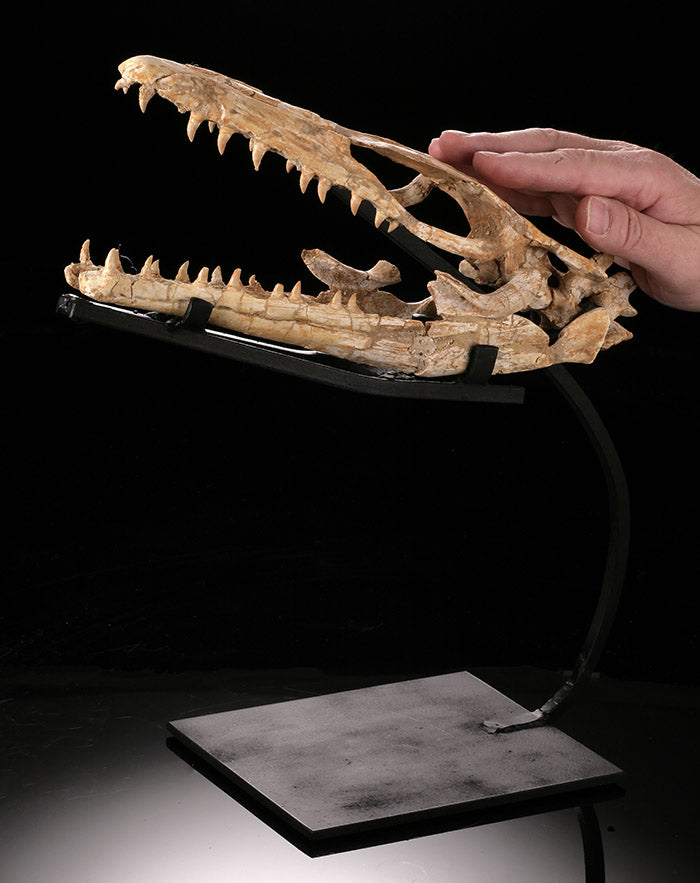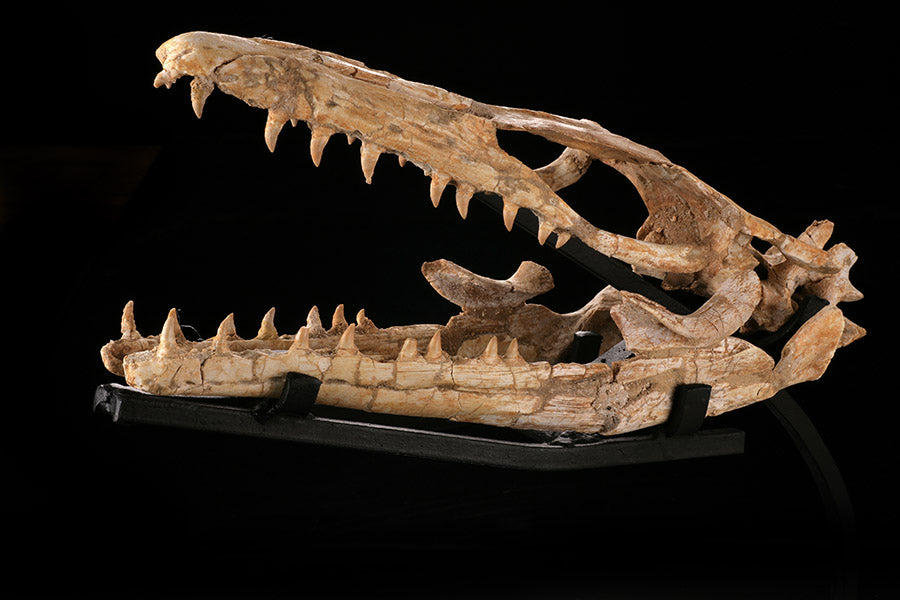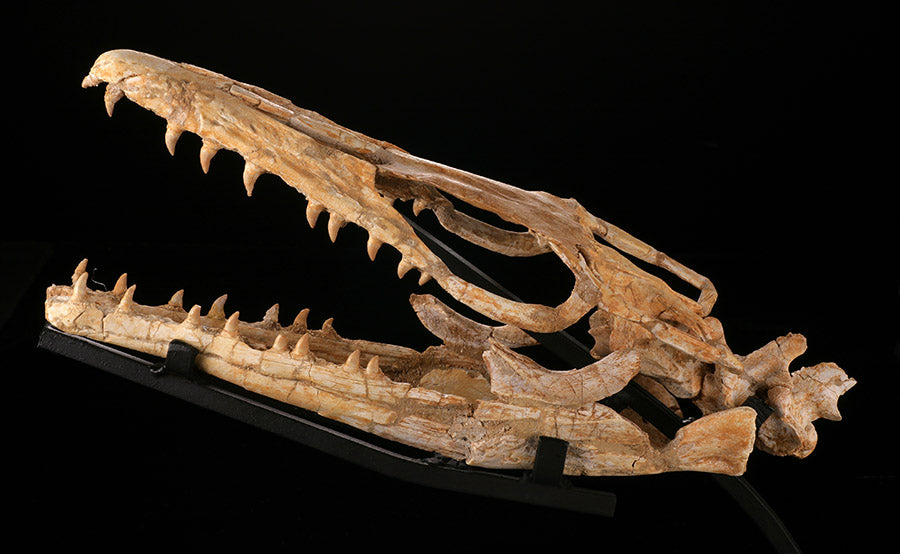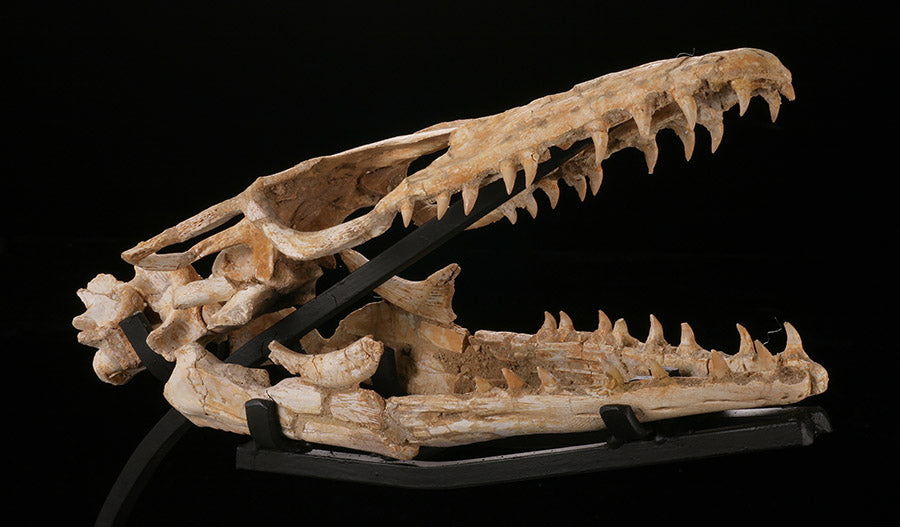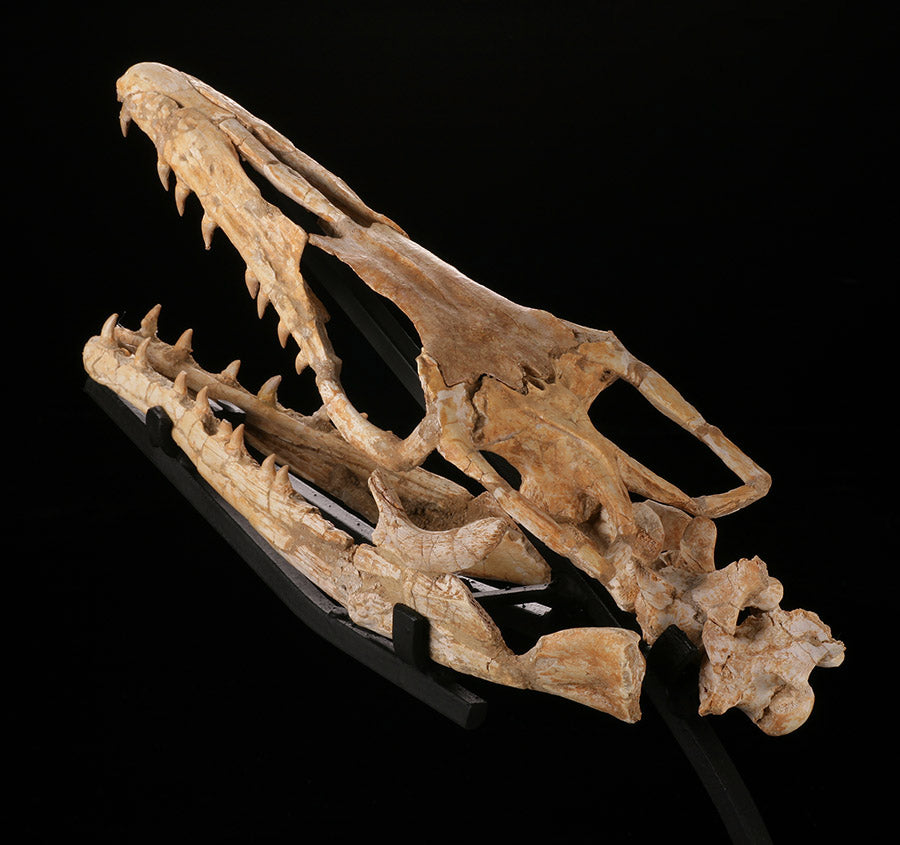








More Information
Mosasaurs were giant marine lizards, considered to be closely related to today's snakes and similar in shape to today's monitor lizard. They were incredibly strong swimmers with powerful double hinged jaws and a skull similar in design to a snake. That gave a Mosasaur the ability to devourer most of its prey practically whole. Mosasaurs lived during the Cretaceous Period, some 80 million years ago. The word "Mosasaur" means "Meuse Reptile". It was named because the first remains of a Mosasaur was discovered close to the Meuse River, near the town of Maastricht in the Netherlands, inside an underground limestone mine sometime between 1770 and 1774.
The smallest Mosasaurs were still huge, measuring from 3 - 3.5 meters (9.8 - 11 feet) long, with the larger species, (Hainosaurus) measuring up to 17.5 meters (57 feet) long! Mosasaur remains have been found worldwide.
Mosasaurs gave birth to live young, rather than laying eggs and it is theorized that they were social within their own family structure, as fossilized remains of younger Mosasaurs are found among fully grown adults. This however did not make Mosasaurs any less vicious as they lurked in the sea, only to swiftly and powerfully strike at their victims. Along with gigantic sharks and other marine carnivores, the oceans of the Cretaceous time period must have been terrifying, to say the least.
![]()


